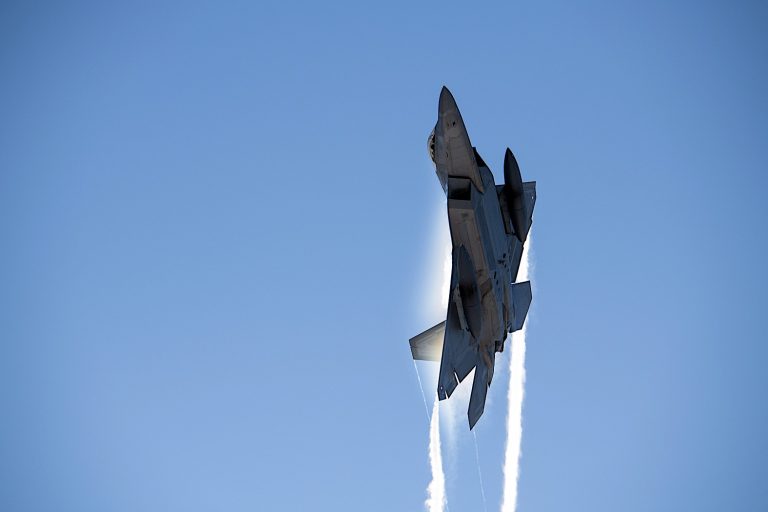Plane Crashes in 2025: Tracking Aviation Accidents & Safety Updates
List of plane crashes in 2025: Latest Updates and Analysis Last updated: 04 October 2025 Plane crashes, though rare, are catastrophic events...
The Lockheed Martin F-22 Raptor, often hailed as the epitome of air superiority, is a remarkable fifth-generation fighter aircraft that has earned its place in the annals of aviation history. With its unparalleled capabilities, the F-22 Raptor has become an icon of American military technology and power. In this article, we will delve into the history, test flights, versions, upgrades, specifications, and notable incidents associated with the F-22 Raptor.
The origins of the F-22 Raptor can be traced back to the 1980s when the United States Air Force (USAF) initiated the Advanced Tactical Fighter (ATF) program. The primary goal was to develop a next-generation fighter aircraft to replace the aging F-15 Eagle. Lockheed Martin, along with Boeing, was selected as a contender for this ambitious project. Ultimately, Lockheed Martin’s design, known as the YF-22, won the competition in 1991.
The YF-22 underwent rigorous testing, leading to its first flight on September 29, 1990. Following successful trials, the YF-22 was designated as the F-22A Raptor, and production began. The F-22 Raptor entered operational service with the USAF in December 2005.
One of the defining features of the F-22 Raptor is its stealth capability, which allows it to operate undetected in hostile airspace. Its advanced avionics and sensor systems provide the pilot with unmatched situational awareness, making it a formidable adversary in air-to-air combat.
Over the years, the F-22 Raptor has seen several versions and upgrades to enhance its performance and maintain its competitive edge. These improvements have included enhanced radar systems, improved avionics, and software updates. The F-22 has also been considered for potential export to allied nations, although the U.S. Congress has imposed restrictions on foreign sales.
The F-22 Raptor is equipped with the AN/APG-77 radar, which is a highly advanced and classified system. While specific details are not publicly disclosed due to security reasons, it provides the F-22 with exceptional situational awareness, long-range detection, and tracking capabilities. The AN/APG-77 radar offers excellent target discrimination, resistance to electronic countermeasures, and the ability to engage multiple targets simultaneously. Its capabilities are crucial for the F-22’s air superiority mission, allowing it to dominate the airspace by detecting, tracking, and engaging both air and ground targets with unmatched precision.
These performance characteristics and advanced radar capabilities make the F-22 Raptor one of the most formidable fighter aircraft in the world, capable of executing a wide range of missions with exceptional speed, agility, and situational awareness.
While the F-22 Raptor is celebrated for its exceptional safety record, like any complex aircraft, it has experienced a few accidents over the years. Here is a list of notable F-22 crashes, along with their dates, crash locations, and causes:
As of my last knowledge update in September 2021, the F-22 Raptor was primarily stationed at several U.S. Air Force bases. These bases included:
Performance:
Total Thrust: Approximately 70,000 pounds of thrust (combined from its two Pratt & Whitney F119-PW-100 turbofan engines).
Speed with Supercruise (Without Afterburners): The F-22 can maintain sustained supersonic speeds without the use of afterburners, typically cruising at speeds around Mach 1.8 (approximately 1,500 mph or 2,414 km/h).
Speed with Afterburners: The F-22 can achieve a top speed of approximately Mach 2.25 (around 1,500 mph or 2,414 km/h) with the use of afterburners.
Maximum Angle of Attack (AoA): The F-22 Raptor has an impressive maximum angle of attack capability, allowing it to achieve extreme angles to maintain control and perform agile maneuvers. The exact value is classified but is estimated to be greater than 60 degrees.
Maximum G-Forces (Gs): The F-22 can sustain high G-forces, with a maximum limit of approximately 9 Gs, which allows it to execute extreme maneuvering during air combat engagements.

According to official Lockheed Martin website, F-22 dimensions are as below.
Length : 62 ft / 18.90 m
Height : 16.67 ft / 5.08 m
Wingspan : 44.5 ft / 13.56 m
Wing Area : 840 ft2 / 78.04 m2
Horizontal Tail Span: 29 ft / 8.84 m
Engine Thrust Class: 35,000 lb / 15,876 kg
Air-to-Air Missiles:
Air-to-Ground Missiles:
Bombs:

List of plane crashes in 2025: Latest Updates and Analysis Last updated: 04 October 2025 Plane crashes, though rare, are catastrophic events...

List of plane crashes in 2024 Last updated: 30 December 2024 Airline crashes, though rare, are catastrophic events that capture global attention...

Air Arabia: Bridging Distances, Creating Memories, and Saving You Money. Founded on February 3, 2003, Air Arabia is a publicly traded...

Navigating Middle Eastern Skies: Best UAE Airlines The United Arab Emirates (UAE) is known for its luxurious lifestyle, iconic skyscrapers, and,...

Top 10 UK Airlines in UK: Ranking the Top UK Airlines When it comes to air travel in the United Kingdom,...

Exploring Europe on a Budget: Unveiling the Best Cheap Flight Deals Europe, with its rich history, diverse cultures, and stunning landscapes,...

Navigating the Skies on a Budget: Cheap European Airlines When it comes to exploring the diverse and culturally rich continent of Europe,...

Exploring the Top Performers: The Best Airlines Globally Best airlines in the world today offer safety, comfort, in-flight entertainment and delicious...
